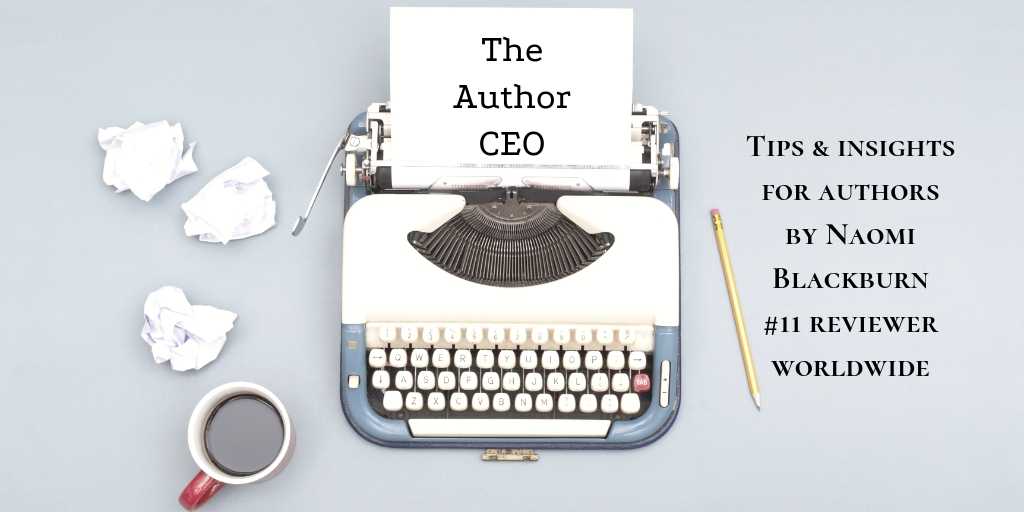This week The Author CEO Naomi Blackburn talks about the importance of best practice: learn from the successes – and failures – of your peers. Most importantly, ensure that the techniques you adopt reflect your own goals and personality – don’t be a carbon copy!
Naomi is founder of the Goodreads group Sisterhood of the Traveling Books, as well as the Nordic Noir group, dedicated to discussing Scandinavian mysteries. This year, Goodreads ranked her at # 11 on their top reviewer list, in both the U.S. and in the world (2011 rankings). As a reviewer, Naomi is brilliant, insightful, and, as she puts it, “brutally honest.”
Please feel free to leave questions for Naomi, as well as any suggestions you may have for future posts. I hope you enjoy the column!
The Author CEO: Best Practice
by Naomi Blackburn
 In business school, we studied the success of the Toyota Corporation as a model for ‘best practices’ in business. When it came to the functioning and efficiency of their organization, Toyota was widely considered the belles of the ball. Other companies wanted to be Toyota; they thought that if they implemented Toyota’s programs, they would experience the same glory and success Toyota enjoyed.
In business school, we studied the success of the Toyota Corporation as a model for ‘best practices’ in business. When it came to the functioning and efficiency of their organization, Toyota was widely considered the belles of the ball. Other companies wanted to be Toyota; they thought that if they implemented Toyota’s programs, they would experience the same glory and success Toyota enjoyed.
Problem was, when the companies tried to emulate Toyota, more likely than not, they failed to achieve that level of success. Why? Because they tried to implement procedures that worked for Toyota but they tried to do it in lockstep; they neither considered their strengths nor integrated Toyota’s best practices into their model.
Let’s start at the beginning, with an explanation of best practice.
Wikipedia defines best practice in business this way:
A best practice is a method or technique that has consistently shown results superior to those achieved with other means, and that is used as a benchmark. In addition, a “best” practice can evolve to become better as improvements are discovered. Best practice is considered by some as a business buzzword used to describe the process of developing and following a standard way of doing things that multiple organizations can use.
The idea is: figure out the practices used by successful companies and then find a way to integrate those practices into your own business model.

So how does one determine best practices for Indie publishing? Key steps include:
1) RESEARCH: learn about successful AUTHORS (note more than one). Check the bestseller lists, read blog posts, pay attention to the books people are reading or authors readers are talking about, ask peers which authors they consider successful. Try to focus on authors who write in your own genre.
2) REACH OUT: this advice goes back to my ‘Play Nice in the Sandbox‘ piece. Reach out to successful indie authors. Ask what they feel has contributed to their success. Learning from the experience of others will save you a boatload of time and frustration. Be polite: I have yet to be turned down by an Indie author when I’ve emailed to discuss their successes/failures.
3) READ: find published information; look at the networking sites successful authors use. These may include Facebook, Twitter, Linked In, etc.
4) STUDY: the webpages and/or blogs of successful authors. How have they set up these sites? How often do they post? What do they talk about? How do they interact with or engage their followers and fans?
5) IDENTIFY: common traits among successful indie authors. What traits unite successful authors who write in different genres and appeal to different audiences?
6) ANALYZE your plan and figure out ways you can utilize the information you gleaned in your business and marketing plan and then MAKE IT YOUR OWN.
I want to focus on number 6, MAKE IT YOUR OWN, for a moment, as I feel that this is the most critical step in the process. When I advise you to identify traits of successful indies, I am not suggesting that you copy verbatim what others authors are doing. By mimicking another author’s voice, platform, or means of reaching out-or any other specific trait!-you come across as derivative and fake. No, identify traits of successful authors, and then put your personal spin on them!
The businesses that copied Toyota’s dynamic failed to because they failed to customize the practices to reflect their own product, culture, or plan. Same applies to indie authors. Like corporations, all indie authors are not the same. You must personalize any best practice to fit your own quirks and personality; otherwise, you, too, will fail.
Identifying common success traits and then simply applying them wastes man power, forces do overs and loses time you might have spent on the production and marketing of your own work. Instead, listen to your voice. Sure, you may emulate successful authors by reaching out as they do, but do so in YOUR way.
Be yourself! Pay attention to the best practices of successful authors-and then identify your own strengths and use that knowledge to integrate best practices into your own plan!
About Naomi Blackburn
Naomi Blackburn, owner of The Author CEO, a consultation firm dedicated to helping independent authors navigate the development of strategic business plans and the marketing world, holds an MBA and has worked in the field of business development, sales and consulting for 12 years. A former social worker, she has helped hundreds of clients meet their life goals. An avid reader and top Goodreads reviewer, she comes to the world of books from a reader/reviewer’s perspective. She strives to help authors achieve their goals by teaching them to think of themselves as CEO/entrepreneur of a small business and helping them negotiate the business side of selling books.



I'd love to hear your thoughts!